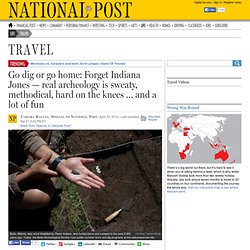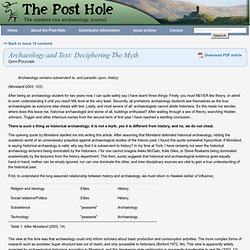

Did Coconut Crabs Really Hide Amelia Earhart's Remains? Please take it from a maritime historian that the "Nikumaroro Remains" story is total nonsense, as is anything else that Gillespie has said.

These TIGHAR guys have been scamming people for decades, raising money to vacation at one beautiful atoll after another and never finding anything real. Looking for Amelia on these islands is like looking for Malaysian Airlines flight 370 in Baltimore. It may be easy to look there and close to home... but that plane just ain't there. Every credible historian says Earhart's Lockheed Electra ran out of fuel and sank in almost 20,000 feet of water. It's expensive and difficult to look in the deep ocean, but I promise you that's where she'll ultimately be found (or what's left of her plane, at least.) Indiana Jones? FBI finds thousands of artifacts in 91-year-old's home. The FBI has seized thousands of artifacts from a 91-year-old Indiana man's home.

Agents say Don Miller amassed a collection of artifacts of "immeasurable" cultural value, but they believe some of the artifacts were "improperly acquired. " The FBI set up shop at the home of a 91-year-old man near Indianapolis, saying he has thousands of artifacts and cultural items originating from at least a dozen different countries and Native American tribes – some of them acquired improperly. Agents and scientists, working in tents erected outside the house last week, were taking items from the home of Donald C.
Miller and packing them up for further analysis. “I have never seen a collection like this in my life except at some of the largest museums,” said Larry Zimmerman, an anthropology and museum studies professor at Indiana University-Purdue University Indianapolis, who is helping the FBI figure out what's what in the private collection. Follow LATimes National on Facebook. Go dig or go home: Forget Indiana Jones — real archeology is sweaty, methodical, hard on the knees … and a lot of fun. It was a hot summer morning and I had just pulled out what seemed to be like the 100th root in my little quadrant of a dig.

Cursing under my breath, I wondered again why I had signed my husband and myself up for an archeological adventure in the middle-of-nowhere Canada. OK, it felt like the middle of nowhere, but we were actually in Bodo, a small Alberta community about three hours from Edmonton, at one of Canada’s largest and most well-preserved archeological sites. Tests of Chilean Mummies Suggest Arsenic Poisoning. Native American History - Pre-European Period.
Everything was water except a very small piece of ground.

On this were the eagle and the coyote. Then the turtle swam to them. They sent it to dive for the earth at the bottom of the water. The turtle barely succeeded in reaching the bottom and touching it with its foot. When it came up again, all the earth seemed washed out. All humans are interested in their origins and try to account for their existence through creation stories, like the one quoted above which is told by the Yaudanchi (a Yokut-speaking Nation living in the south-central San Joaquin Valley of California). Like North America's Native People, anthropologists and archaeologists also have creation stories which explain how America's native peoples came to be, though their stories differ markedly from those of most of the Native People. Humans first evolved in Africa some 4 - 5 million years ago.
The cliff-hanging cists of Arran. Article created on Friday, April 4, 2014 In March 2012, a short stone burial cist was spotted in the cliff face of a disused quarry at Sannox on the Isle of Arran.

The West of Scotland Archaeology Service were alerted, which prompted Historic Scotland to commission GUARD Archaeology to undertake a rescue excavation. A team, led by Iraia Arabaolaza, investigated the site; not an easy task given the height location of the cist. The exposed section of an eroding face of the sand cliff was cleaned with the aid of a mechanical cherry-picker and this revealed not just one but two cists. The subsequent excavation of the cists required the archaeologists to wear harness and be tied to a fixed point at all times. Cleaning the cists using a mechanical cherry-picker © GUARD Archaeology Ltd A window into Bronze Age mortuary practises The results of this now completed work provides a window into the complex and varied mortuary practices of early Bronze Age Scotland.
Anthropology.missouri.edu/sites/default/files/forms/2014 human bone density.PDF. The Post Hole. Archaeology remains subservient to, and parasitic upon, history (Moreland 2003, 103) After being an archaeology student for two years now, I can quite safely say I have learnt three things: Firstly, you must NEVER like theory, or admit to even understanding it until you reach MA level at the very least.

Secondly, all prehistoric archaeology students see themselves as the true archaeologists as everyone else cheats with text. Lastly, and most severe of all, archaeologists cannot abide historians. So this made me wonder, where does this leave me, historical archaeologist and worse of all, buildings enthusiast? There is such a thing as historical archaeology; it is not a myth, yes it is different from history, and no, we do not cheat. The opening quote by Moreland startled me into writing this article.
European. United States. Misc.